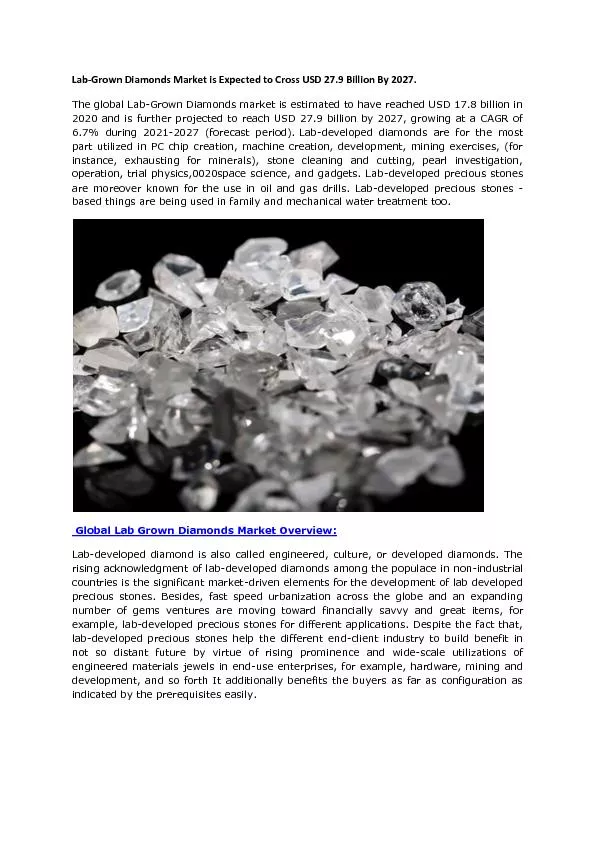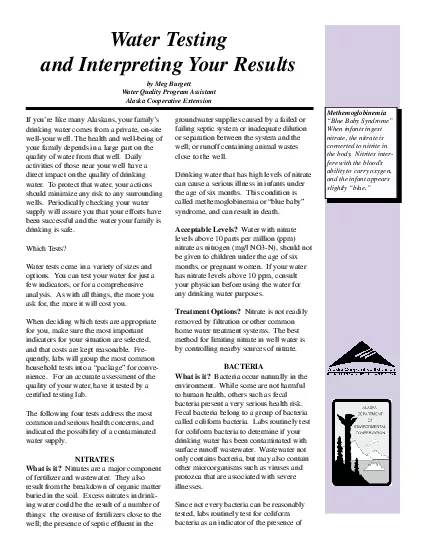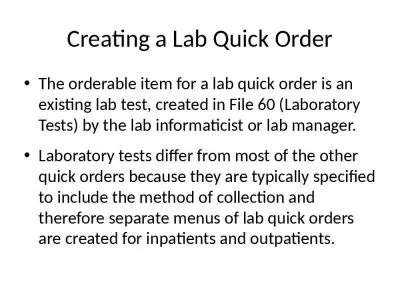PPT-A Quick Review of Lab Options
Author : SunshineSmiles | Published Date : 2022-08-01
Be thoughtful This is not meant to be Thou shalt not but a gentle nudge There is a science to medicine but there is also an art Sometimes you should break the rules
Presentation Embed Code
Download Presentation
Download Presentation The PPT/PDF document "A Quick Review of Lab Options" is the property of its rightful owner. Permission is granted to download and print the materials on this website for personal, non-commercial use only, and to display it on your personal computer provided you do not modify the materials and that you retain all copyright notices contained in the materials. By downloading content from our website, you accept the terms of this agreement.
A Quick Review of Lab Options: Transcript
Download Rules Of Document
"A Quick Review of Lab Options"The content belongs to its owner. You may download and print it for personal use, without modification, and keep all copyright notices. By downloading, you agree to these terms.
Related Documents














